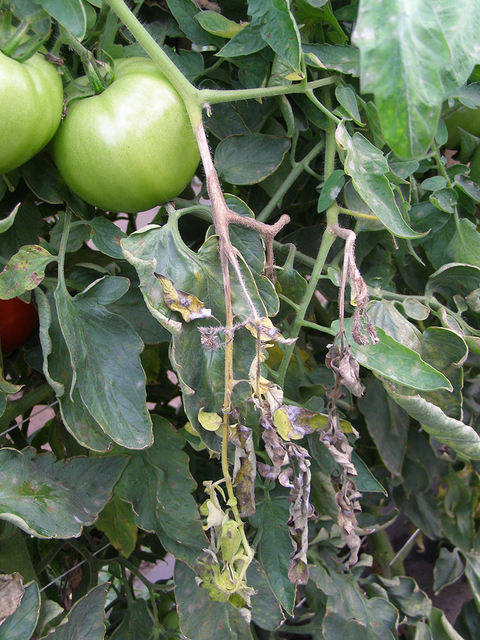Pathogen
The fungus Botrytis cinerea.
Host range
More than 200 plant genera, primarily broad leafed plants.
Identification
Signs and symptoms
- Leaves have irregular to V-shaped brown blotches, often starting at the margin of the leaf.
- Die-back symptoms appear as infection progresses from leaves, through petioles, towards the main stem.
- Brown, oval lesions can girdle the stem.
Gray mold infection on tomato stems - Infected fruit develop a pale, soft, watery rot.
- Fruit symptoms occur on green and red fruit; while on the plant and post-harvest.
- Failed fruit infection results in white rings or halos on the fruit, called ghost spots.
Small white rings on tomato fruit indicate failed gray mold infections - Infected flowers turn brown and die.
- In high humidity, fluffy gray spores cover infected plant parts.
- The spores are light brown-gray on black stalks.
Environment
- Cool temperatures of 60-75°F (60-70°F optimum)
- Temperatures greater than 82°F suppress fungal growth and sporulation.
- High humidity (greater than 80%)
- Spore germination is optimal with leaf wetness of 5 to 8 hours.
Biology and disease cycle
- The fungus survives on numerous weed hosts, as a saprophyte on dead plant material, and as hard resting structures (sclerotia) in plant debris and soil.
- Spores are spread short and long distances by wind and rain, equipment and workers.
- Infections begin on weak, dying or wounded plant tissue.












0 Comments